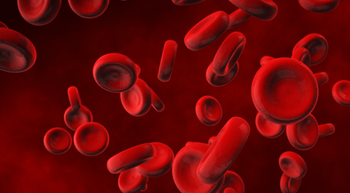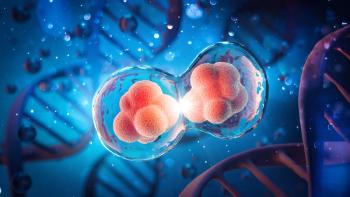
Early Physical Activity Interventions Needed in Young Adults with Cancer
As part of a larger study, nurses found it is important for AYAs to remain physically active during and after cancer treatment.
Physical activity interventions should be individualized for adolescents and young adults (AYAs) with cancer, according to study findings presented at the Oncology Nursing Society 43rd Annual Congress.
Of note, these interventions are needed during and after treatment, said Jeanne Erickson PhD, RN, University of Wisconsin-Milwaukee College of Nursing.
Despite the fact that cancer is the leading disease-related cause of death in AYAs, this group of individuals tends to be an understudied patient population. As a result, few studies have evaluated physical activity interventions in this population.
In addition, staying physically active has important short- and long-term benefits for patients with cancer, including reduced symptom severity, improved physical function, and better tolerance to treatment. However, AYAs tend to be less active during and after chemotherapy.
“Physical activity interventions are recommended to relieve symptoms and improve function,” Erickson said. “Few studies have explored symptoms and physical activity in AYAs during cancer treatment.”
Therefore, Erickson and colleagues are conducting the randomized PROMIS-29 trial which is designed to examine the effects of physical activity interventions for AYAs to help them self-manage fatigue. In her presentation, she described the symptoms and physical activity of young adults during the early months of chemotherapy to provide baseline data for the larger study.
Patients treated at the Froedtert Hospital/Medical College of Wisconsin Cancer Center and Children’s Hospital of Wisconsin who were aged 18 to 39 years and starting a chemotherapy regimen for any cancer diagnosis are eligible for the study.
To document their baseline physical activity, participants wore an accelerometer device for 7 days during chemotherapy administration to determine steps per day and the amount of time participants spent per day in light, moderate, and/or vigorous physical activity. In addition, symptom severity was surveyed on day 1 of a patient’s chemotherapy cycle.
The 21 AYAs were an average age of 33 years of age (range, 18-39 years); and majority were female (n = 15, 71%), white (n = 17; 81%), married (n = 12; 57.1%), and parents (n = 12; 57.1%). The AYAs were diagnosed with breast cancer (32%), lymphoma (31%), acute lymphocytic leukemia (25%), myeloma (6%), or melanoma (6%).
At baseline, the group averaged 4638 steps per day (range, 1318-11,572) with 233.35 minutes per day of light physical activity (range, 119-330), 16.08 minutes per day of moderate physical activity (range, 0.02-92), and no vigorous physical activity.
“These young adults were inactive during the early months of chemotherapy. We can measure that and compare that to an age-matched, national, healthy cohort. In that cohort, by average, young adults, males and females, had about 20 to 30 minutes of moderate physical activity a day, and this sample only had about 15,” said Erickson. “But there were various levels of physical activity in this sample. And their symptom scores were about average at the beginning of their chemotherapy regimen.”
For the PROMIS-29 profiling, a T score of 50 is considered average for the general US population, with a higher score being more of the concept, Erickson said. The mean standardized PROMIS-29 profile scores varied for physical function (49.48; range, 33.3-56.9), anxiety (56.33; range, 40.3-67.3), depression (52.27; range, 41-79.4), fatigue (55.86; range, 33.7-69.0), sleep disturbance (53.07; range, 37.5-66.0), ability to participate (49.56; range, 34.0-64.2), and pain interference (50.33; range, 37.3-64.2).
“It is interesting how their symptoms were about average,” Erickson said. “There is some evidence that, in particular, AYAs have higher symptom severity scores than other ages, but that didn’t look to be true in this beginning sample that I have. So, I will be interested to see how their related symptoms change over the months of treatment, and how that affects their physical activity.”
She is also interested to see what the AYA population impacted by chemotherapy treatment does with the remaining hours of their day, and how researchers can combat inactivity.
“If you think they had 4 hours of light physical activity, that means there about 20 hours filled with sedentary behavior and sleep,” Erickson said. “So how can we make sure we are looking more at their sleep and sedentary behavior, and prevent those minutes of inactivity?”
Lastly, Erickson noted she will continue to follow these patients for 8 months.
“It is important to look at how their physical activity changes during their months of cancer treatment,” she said. “The other concern is that they get caught in that cycle where they have fatigue and become less active and have more fatigue and become even more inactive. So, what I would like to see my intervention do is break that cycle of fatigue and try to maintain activity or prevent inactivity over the months of chemotherapy.”
Reference:
Erickson J, Swartz A, Tokarek N. Physical Activity and Symptoms in Young Adults with Cancer in Early Months of Chemotherapy. Presented at: ONS 43rd Annual Congress; May 17-20, 2018; Washington D.C.
Newsletter
Knowledge is power. Don’t miss the most recent breakthroughs in cancer care.






























































































